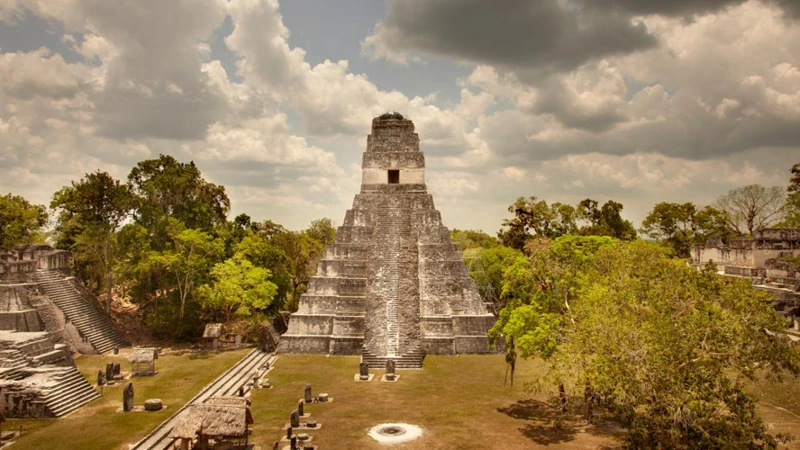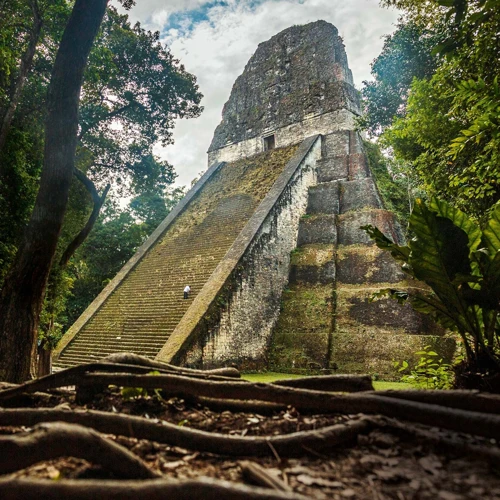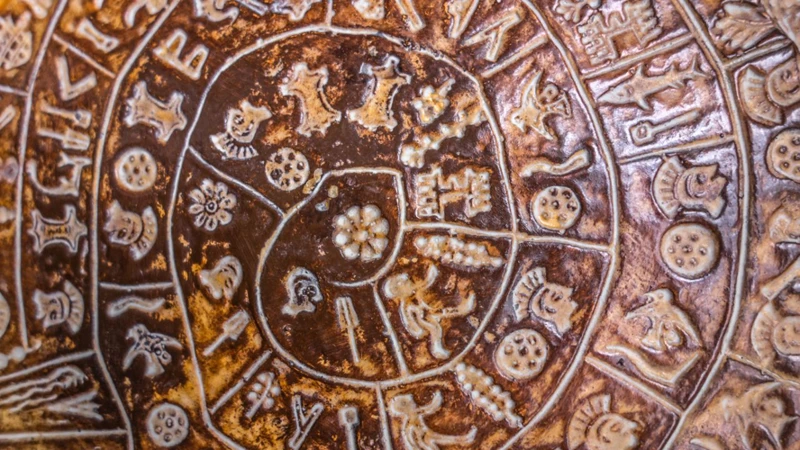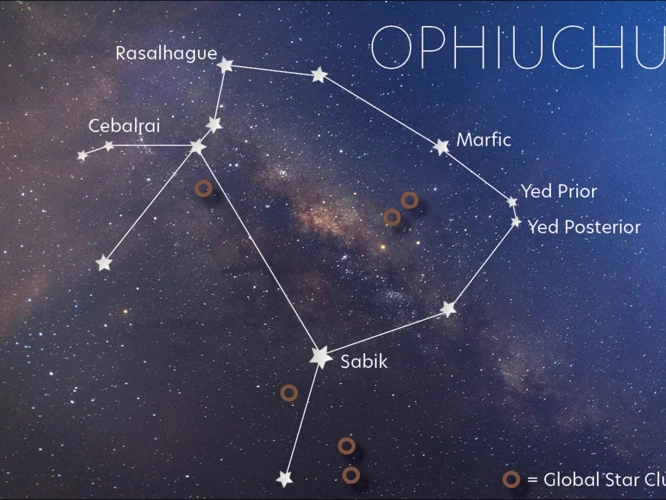The mystery and intrigue surrounding the ancient Maya civilization have captivated scholars and historians for centuries. From their extraordinary architectural achievements to their complex social organization, the Maya left behind a rich and enigmatic legacy. In this article, we will explore the rise and fall of Mayan City-States, delving into the factors that led to their flourishing and eventual decline. Additionally, we will uncover the enduring contributions of the Maya, ensuring their cultural heritage lives on. So, join us on this journey as we unveil the fascinating story of the rise and fall of Mayan City-States.
Contents
- The Rise of Mayan City-States
- The Fall of Mayan City-States
- The Enduring Legacy of Mayan City-States
- Conclusion
-
Frequently Asked Questions
- 1. How did the Mayans practice agriculture?
- 2. What role did astronomy play in Mayan agriculture?
- 3. How were Mayan City-States governed?
- 4. Did the Mayan City-States have conflicts with each other?
- 5. What were the main architectural achievements of the Mayans?
- 6. What subjects did Mayan hieroglyphic writing record?
- 7. How did Mayan City-States decline?
- 8. What is the Mayan calendar, and how did it shape their culture?
- 9. What were some of the contributions of the Mayans to mathematics?
- 10. How has Mayan culture and heritage persisted in modern times?
- References
-
Frequently Asked Questions
- 1. How did the Mayan city-states emerge as complex societies?
- 2. What role did agriculture play in the rise of Mayan city-states?
- 3. How were the Mayan city-states politically organized?
- 4. What led to the formation of Mayan city-states?
- 5. What were the architectural and cultural achievements of the Mayan city-states?
- 6. What environmental factors contributed to the decline of Mayan city-states?
- 7. What were some internal conflicts that led to the downfall of Mayan city-states?
- 8. How did external influences and trade disruptions contribute to the fall of Mayan city-states?
- 9. What is the significance of the Mayan calendar and astronomy?
- 10. How does contemporary Mayan culture preserve the legacy of the ancient city-states?
- References
- Read More
The Rise of Mayan City-States

The rise of Mayan City-States can be attributed to their highly developed society and advanced agricultural practices. The Maya inhabited an area encompassing modern-day Mexico, Guatemala, Belize, Honduras, and El Salvador. They successfully cultivated crops such as maize, beans, and squash, utilizing sophisticated farming techniques such as terracing and irrigation. This allowed them to sustain a large population and build thriving urban centers. The surplus food production enabled a class-based society to emerge, with farmers, artisans, traders, and rulers contributing to the growth and prosperity of the city-states. The Mayans’ deep understanding of astronomy also played a crucial role in their agricultural success, as they aligned their planting and harvesting seasons with celestial events. This intricate relationship between society and agriculture formed the foundation for the rise of Mayan City-States.
Mayan City-States were characterized by a complex political organization that contributed to their rise. Each city-state was ruled by a hereditary king, known as a “halach uinic,” who held both religious and political authority. The kingdom was further divided into smaller administrative units governed by nobles and priests. These city-states were engaged in fierce competition with one another, vying for control over resources and establishing their supremacy. The process of city-state formation involved the expansion of urban centers through conquest and the establishment of alliances with neighboring communities. This expansionist strategy allowed the Mayan society to grow and flourish. Each city-state had its own distinct identity, with unique architectural styles and ceremonial centers dedicated to their ruling deity. This political organization and territorial expansion were vital elements in the rise of Mayan City-States.
One of the most remarkable aspects of Mayan City-States was their monumental architecture and cultural achievements. The Maya built awe-inspiring structures, such as temples, palaces, and ball courts, that showcased their advanced engineering and architectural skills. The most iconic example of Mayan architecture is the towering pyramids found in cities like Tikal, Palenque, and Chichen Itza. These monumental structures were not only impressive in size but also served as religious and ceremonial centers, reflecting the spiritual and cultural significance of the Mayan civilization. Alongside their architectural prowess, the Mayans made significant cultural achievements in areas such as art, mathematics, astronomy, and hieroglyphic writing. The intricate art and sculptures depicted scenes from Mayan mythology, historical events, and daily life. Their hieroglyphic writing system, known as glyphs, was used to record important events, rituals, and genealogies. These cultural achievements were a testament to the intellectual and artistic sophistication of the Maya, further contributing to the rise of their city-states.
1. Complex Society and Agriculture
The complexity of Mayan society was closely intertwined with their advanced agricultural practices. The Mayans developed a sophisticated system of agriculture that allowed them to sustain a large population. At the heart of their agricultural success was the cultivation of maize, beans, and squash, known as the “Three Sisters.” These crops were interplanted in a method called companion planting, where each crop provided essential nutrients to the others, resulting in a more efficient use of land and resources. Additionally, the Mayans implemented innovative techniques such as terracing, which involved creating step-like platforms on hillsides to prevent erosion and maximize arable land. This allowed them to cultivate crops in hilly areas that would have otherwise been unsuitable for agriculture. Another crucial aspect of Mayan agriculture was their understanding of seasonal cycles and celestial events. They closely observed the movements of the sun, moon, and stars to determine the optimal timing for planting and harvesting. This integration of astronomy and agriculture ensured the Mayans maximized their crop yields and provided a stable food supply for their growing population. With their complex agricultural system, the Mayans were able to sustain a thriving society and support the development of city-states.
2. Political Organization and City-State Formation
The political organization and city-state formation of the Mayans played a critical role in their civilization’s development and success. Each Mayan city-state was governed by a hereditary king, known as a “halach uinic,” who held both religious and political authority. These kings were regarded as divine figures, and their governance was believed to be crucial for maintaining harmony and balance within the society. The city-states were further divided into smaller administrative units, which were governed by nobles and high-ranking officials. These officials assisted the king in maintaining social order, overseeing the collection of taxes, and resolving disputes.
The process of city-state formation was complex and involved a combination of conquest, alliances, and political maneuvering. The Mayans engaged in frequent warfare, primarily driven by competition for resources and exerting dominance over neighboring regions. Victorious city-states would often assert their authority by incorporating conquered lands and communities into their own political structures. This expansionist strategy allowed the Mayan civilization to grow and prosper, creating a network of interconnected city-states with distinct political identities.
Additionally, alliances and diplomacy played a crucial role in city-state formation. The Maya formed alliances and established political marriages with neighboring communities to increase their strength and territorial control. These alliances not only provided military support but also facilitated the exchange of economic resources and cultural practices. Over time, these interconnected city-states grew into powerful political entities, fostering a complex web of relationships that contributed to the stability and longevity of the Mayan civilization.
The political organization and city-state formation of the Mayans were instrumental in their rise as a sophisticated civilization. The hierarchical structure, with the king at the apex, allowed for effective governance and resource management. The interconnectedness of the city-states through alliances and diplomacy created a thriving network that facilitated trade, cultural exchange, and the dissemination of knowledge. These political achievements laid the foundation for the cultural and architectural achievements that characterized the Mayan civilization. The Mayan political organization and city-state formation were key elements in the rise and flourishing of their civilization.
3. Monumental Architecture and Cultural Achievements
Monumental architecture and cultural achievements were defining characteristics of the Mayan City-States. The Maya demonstrated a remarkable mastery of architectural design and construction, evident in their monumental structures and city layouts. The most iconic examples of Mayan architecture are the majestic pyramids, temples, and palaces that grace the cityscapes of sites like Tikal, Palenque, and Chichen Itza. These immense structures, built with precision and ingenuity, showcased the engineering prowess of the Maya civilization. The pyramids, with their steep steps and grandeur, served as religious and ceremonial centers, allowing the Maya to connect with the spiritual realm and carry out elaborate rituals and ceremonies. These architectural marvels were adorned with intricate carvings and sculptures that depicted mythological scenes, gods, and rulers. The attention to detail and artistic skill demonstrated in these works of art exemplified the sophistication of Mayan culture.
In addition to their architectural achievements, the Maya made significant cultural contributions in various fields. One of their most notable accomplishments was the development of a highly advanced system of hieroglyphic writing. The glyphs were a combination of pictorial symbols and phonetic elements, enabling the Maya to record their history, rituals, and astronomical knowledge. This written language played a crucial role in preserving the cultural heritage of the Mayan City-States and providing insights into their complex society. The Mayans’ astronomical knowledge was another aspect of their cultural achievements. They studied the movements of celestial bodies and developed a sophisticated calendar system that encompassed both the solar and lunar cycles. This deep understanding of astronomy allowed them to regulate agricultural activities, predict celestial events, and incorporate cosmological beliefs into their religious practices. The Maya also excelled in various artistic expressions, including pottery, sculpture, and weaving. Their intricate pottery designs showcased their artistic intricacy, while their vibrant textiles reflected their advanced weaving techniques. These cultural achievements not only contributed to the identity and pride of the Mayan City-States but also left a lasting impact on art, writing systems, and scientific observations for future generations to study and appreciate.
The Fall of Mayan City-States

The fall of Mayan City-States was a complex process influenced by various internal and external factors. One significant factor was the environmental degradation and agricultural decline that affected the Maya civilization. The Maya heavily relied on intensive slash-and-burn agricultural techniques, which led to deforestation and soil erosion. Over time, this unsustainable agricultural practice resulted in soil infertility, decreased crop yields, and food shortages. The decline in agricultural productivity weakened the city-states’ ability to sustain their growing populations and led to social unrest.
Internal conflicts and social unrest also played a role in the fall of Mayan City-States. As the population increased and resources became scarcer, competition for control over fertile land and trade routes intensified. This led to conflicts between rival city-states, with warfare becoming more frequent. The internal strife weakened the unity and stability of the Maya civilization, diminishing their ability to withstand external pressures.
External influences and trade disruptions further contributed to the decline of Mayan City-States. The collapse of long-distance trade networks, which connected the Maya to other Mesoamerican civilizations, disrupted economic activities and exchanged cultural influences. This disrupted trade flow, along with political and social instability, limited access to important resources and prevented the exchange of ideas and innovations. Additionally, there is evidence of droughts and natural disasters during this time period, which further strained the already fragile society.
Combined, these factors led to the decline of Mayan City-States, resulting in the abandonment of many urban centers and the fragmentation of political power. The once prosperous and thriving civilization slowly dissolved, leaving behind only remnants of their glorious past. However, it is important to note that while the city-states fell, the Maya as a cultural group persevered, adapting to new circumstances and carrying their rich heritage forward. This endurance and resilience are a testament to the enduring legacy of the Mayan civilization.
1. Environmental Factors and Agricultural Decline
Environmental factors played a significant role in the decline of Mayan City-States, particularly in relation to agriculture. The Maya relied heavily on their advanced agricultural practices to support their population and maintain the prosperity of their city-states. However, several environmental factors contributed to the agricultural decline that eventually led to the downfall of these ancient civilizations.
1. Climate Change: The Maya experienced fluctuations in climate patterns, including periods of prolonged droughts. These droughts were devastating to the agricultural systems of the Maya, as they relied heavily on rainfall for irrigation and crop cultivation. The scarcity of water resources and the inability to sustain crops led to food shortages and widespread famine. As a result, the once fertile farmlands became arid and unproductive, leading to a decline in agricultural output.
2. Deforestation: The Maya practiced slash-and-burn agriculture, which involved clearing land by burning trees and vegetation. While this method was sustainable on a small scale, the continuously increasing population and expansion of city-states required more land for cultivation. This led to extensive deforestation, which disrupted the delicate ecological balance of the region. Deforestation resulted in soil erosion, loss of biodiversity, and decreased rainfall. The loss of forest cover directly impacted the availability of resources and further contributed to the agricultural decline.
3. Soil Degradation: The Maya practiced intensive farming methods that required them to continuously cultivate the same plots of land. Over time, this led to the depletion of essential nutrients in the soil, making it less fertile and productive. The lack of proper soil management techniques, such as crop rotation and soil conservation practices, accelerated soil degradation. The combination of intensive farming and environmental factors created a vicious cycle of diminishing agricultural productivity, ultimately affecting the sustainability of the Mayan City-States.
These environmental factors, including climate change, deforestation, and soil degradation, collectively played a crucial role in the agricultural decline experienced by the Mayan City-States. The inability to sustain their agricultural systems severely impacted their food production, leading to social unrest and the eventual decline of these once thriving civilizations.
Internal conflicts and social unrest played a significant role in the eventual decline of Mayan City-States. Despite their outward appearance of stability and prosperity, these city-states were not immune to internal tensions and power struggles. The ruling elite, consisting of kings, nobles, and priests, often found themselves embroiled in conflicts over succession, territorial disputes, and control of resources. These disputes could escalate into full-scale civil war, leading to the fragmentation and weakening of the city-states. Social unrest also simmered within the Mayan society, as the vast socio-economic disparities created dissatisfaction among the lower classes. The commoners, who labored in the fields and supported the ruling elite, grew increasingly discontented with their societal position. This discontent sometimes manifested in uprisings and rebellions, further destabilizing the city-states. The internal conflicts and social unrest eroded the social fabric and weakened the power structures within Mayan City-States, contributing to their eventual downfall.
3. External Influences and Trade Disruptions
External influences and trade disruptions played a significant role in the fall of Mayan City-States. The Maya had established networks of trade and commerce, both within their region and with distant civilizations. This facilitated the exchange of valuable goods, including jade, obsidian, textiles, and agricultural produce. However, these trade routes were susceptible to disruptions from external forces. The decline of long-distance trade connections, potentially due to changing political dynamics or conflict, would have impacted the economic stability of the city-states. Additionally, as the Maya expanded their territories and encountered new cultures, the introduction of foreign goods and ideas created a shift in their own social and economic systems. This, coupled with the increasing influence of outside civilizations, such as the arrival of the Toltec and later the Spanish conquistadors, brought about profound changes that would contribute to the eventual collapse of the Mayan City-States. The disruption of trade and the influence of external forces further weakened the once-thriving civilization, leaving it vulnerable to other internal factors that would hasten its downfall.
The Enduring Legacy of Mayan City-States

The enduring legacy of Mayan City-States continues to shape our understanding of ancient civilizations and has left a lasting impact on various aspects of contemporary culture. One of the most influential contributions of the Maya is their complex system of timekeeping, most notably embodied by the Mayan calendar. The Mayan calendar was a remarkably accurate astronomical tool that incorporated multiple cycles, including the 365-day solar year, the 260-day ritual calendar, and the Long Count calendar that spanned thousands of years. This precise system of time measurement not only guided the daily lives of the Maya but also demonstrated their advanced knowledge of astronomy. Today, the Mayan calendar still fascinates people worldwide, and its interpretations continue to play a role in astrology and spirituality, with individuals referring to their natal charts to gain insights into their personalities and life trajectories.
The Maya also excelled in the realms of art, sculpture, and hieroglyphic writing. Their artistic expressions featured intricate detailing, vibrant colors, and a wide range of themes, including religious rituals, mythological narratives, and everyday life. Mayan sculptures were skillfully crafted and depicted gods, rulers, and other significant figures with a combination of realism and symbolism. These artworks provide valuable insights into Mayan mythology, religious beliefs, and social structures. Similarly, the Maya’s hieroglyphic writing system was a remarkable achievement, with glyphs representing both phonetic and ideographic elements. Deciphering this ancient script has allowed researchers to learn more about Mayan history, rituals, and important events. Today, the deciphered glyphs and their translations provide a window into the cultural heritage of the Maya and serve as a testament to their intellectual prowess.
Contemporary Mayan culture showcases a living heritage that has been passed down through generations. Despite the decline of the ancient city-states, many Mayan communities have preserved their traditions, languages, and craftsmanship. Today, indigenous Mayan groups continue to celebrate their unique customs, such as traditional ceremonies, dances, and clothing. Artisans produce handcrafted textiles, pottery, and intricate jewelry, carrying on the legacy of Mayan craftsmanship. Additionally, the influence of Mayan mythology and folklore can be seen in various contemporary artistic expressions, literature, and even in the influence of Celtic mythology in some modern works. The enduring legacy of Mayan City-States is a testament to the resilience and cultural richness of the Maya people, ensuring their heritage remains alive and cherished.
1. Mayan Calendar and Astronomy
The Mayan Calendar and astronomy were integral components of the Mayan society, shaping their religious beliefs and agricultural practices. The Mayans developed a remarkably accurate calendar system that encompassed both solar and lunar cycles. This calendar, known as the Tzolk’in, consisted of 260 days and was used for religious ceremonies, divination, and agricultural planning. It was based on the alignment of celestial bodies and the interplay between various astronomical phenomena. The Mayans also observed and documented the movements of planets, stars, and constellations, leading to significant advancements in astronomy. Their astronomical knowledge allowed them to predict celestial events such as eclipses, solstices, and equinoxes, which held great significance in their religious and cultural practices. The Mayan fascination with astronomy extended to their impressive architectural achievements, as many of their temples and pyramids were aligned with celestial bodies. This alignment served not only as a practical tool for observation but also as a symbolic connection between the celestial and earthly realms. The Mayan Calendar and their profound understanding of astronomy were essential elements of their civilization, guiding their rituals, ceremonies, and agricultural activities. The legacy of the Mayan Calendar and their celestial observations continues to intrigue and inspire researchers and astrologers to this day.
2. Art, Sculpture, and Hieroglyphic Writing
Art, sculpture, and hieroglyphic writing were integral components of Maya civilization, showcasing their creativity and intellectual prowess. The Maya excelled in various art forms, creating intricate and elaborate works that depicted their mythology, religious beliefs, and daily life. One of the most distinct features of Maya art is their intricate ceramic vessels, adorned with detailed motifs and vibrant colors. These vessels often depicted scenes from religious rituals, royal activities, and mythological narratives. The Maya also excelled in stone carving, creating mesmerizing sculptures that conveyed a sense of realism and spiritual significance. Sculptures often portrayed rulers, deities, and mythical creatures, providing insight into their beliefs and societal structures.
Hieroglyphic writing was another remarkable accomplishment of the Maya. Their writing system, consisting of over 800 unique glyphs, played a pivotal role in recording historical events, political alliances, and religious ceremonies. Maya scribes meticulously recorded their knowledge and history on various surfaces, including stelae, lintels, and codices. The most famous surviving Maya codex is the Dresden Codex, a compilation of astronomical and calendrical information. While the decipherment of Maya hieroglyphs was a significant challenge, the combined efforts of scholars and linguists have unveiled the secrets of their written language, shedding light on the complexities of Mayan society.
To fully appreciate the artistic and intellectual achievements of the Maya, it is essential to understand the cultural and symbolic significance embedded within their artwork. Each artistic expression was laden with religious and ritualistic meaning, reflecting the Maya’s connection with the spiritual realm. The intricate details and symbolism in their art conveyed narratives of creation, warfare, and ancestral lineage. The influence of Mayan art extended beyond their city-states, resonating with contemporary artists and scholars who draw inspiration from the sophisticated craftsmanship and deep symbolism.
The art, sculpture, and hieroglyphic writing of the Maya are testament to their rich cultural and intellectual heritage. Through their intricately crafted ceramics, sculptures, and complex writing system, the Maya captured their mythology, history, and spiritual beliefs. To this day, the remarkable artistic achievements of the Maya continue to inspire and fascinate, allowing us to glimpse into the extraordinary world of the ancient Mayan civilization.
3. Contemporary Mayan Culture and Heritage
Contemporary Mayan culture and heritage continue to thrive, preserving the traditions and legacies of the ancient Mayan City-States. Despite the decline of the city-state civilization, the Maya people have persevered through centuries, maintaining their unique customs, languages, and spiritual practices. Today, there are approximately six million individuals of Maya descent spread across the Mesoamerican region. These communities have managed to retain their traditional way of life, incorporating elements from their ancestors while adapting to the modern world.
The contemporary Maya maintain a deep connection with their ancestral lands and engage in agricultural practices similar to those of their forefathers. They cultivate crops such as corn, beans, and squash, utilizing techniques passed down through generations. Additionally, the Maya still practice traditional crafts and arts, creating intricate textiles, pottery, and carvings that reflect their rich cultural heritage. These artisanal works often feature symbolic representations of ancient Mayan deities and mythological narratives.
Spirituality holds a significant place in contemporary Mayan culture, with rituals and ceremonies honoring the cycles of nature and ancestral spirits. These spiritual practices encompass the veneration of sacred sites and the deities associated with them. Many Maya communities still partake in ceremonies to mark important life events and agricultural milestones, preserving the ancient Mayan cosmology.
In recent years, there has been a resurgence of interest in Mayan traditions and an increased awareness of the importance of preserving indigenous cultures. Efforts are being made to revitalize Mayan languages and promote cultural education among younger generations. The Maya have also become active participants in the tourism industry, sharing their customs and knowledge with visitors while striving to protect their sacred sites and natural resources.
Contemporary Mayan culture and heritage serve as a living testament to the lasting impact of the ancient Mayan City-States. The endurance of their unique traditions, languages, and spiritual practices showcases the resilience and strength of the Maya people. As we continue to appreciate and learn from their rich cultural heritage, we contribute to the preservation and celebration of the living legacy of the Mayan civilization.
Link: Moon Sign Compatibility Guide: Find Your Perfect Match
Conclusion

In conclusion, the rise and fall of Mayan City-States is a captivating tale of a civilization that flourished and eventually faced challenges that led to its decline. The Mayans’ complex society, advanced agricultural practices, and political organization were key factors in their rise to power. The monumental architecture and cultural achievements of the Maya showcased their intellectual and artistic prowess. However, external influences, internal conflicts, and environmental factors contributed to the fall of these once-thriving city-states. Despite their decline, the Mayan civilization left an enduring legacy. Their intricate calendar system and astronomical knowledge continue to fascinate and inspire. The art, sculpture, and hieroglyphic writing of the Mayans provide valuable insights into their culture and history. Additionally, contemporary Mayan culture and heritage preserve the traditions and customs of their ancestors. The story of Mayan City-States serves as a reminder of the complexities of human civilization and the enduring impact of ancient cultures on our modern world.
Frequently Asked Questions

1. How did the Mayans practice agriculture?
The Mayans practiced agriculture using advanced techniques such as terracing and irrigation. They cultivated crops like maize, beans, and squash, which provided a stable food supply for their growing population.
2. What role did astronomy play in Mayan agriculture?
Astronomy played a significant role in Mayan agriculture. The Mayans closely observed celestial events and aligned their planting and harvesting seasons with the movements of the stars, ensuring successful and bountiful crops.
3. How were Mayan City-States governed?
Mayan City-States were governed by hereditary kings known as “halach uinic.” They held both religious and political authority, while nobles and priests governed smaller administrative units within the city-state.
4. Did the Mayan City-States have conflicts with each other?
Yes, the Mayan City-States often had conflicts with each other as they competed for control over resources and established their dominance. This rivalry led to territorial expansion and the formation of alliances.
5. What were the main architectural achievements of the Mayans?
The Mayans were renowned for their monumental architecture, including towering pyramids, temples, palaces, and ball courts. These structures showcased their advanced engineering and served as religious and ceremonial centers.
6. What subjects did Mayan hieroglyphic writing record?
Mayan hieroglyphic writing recorded a wide range of subjects, including important historical events, religious rituals, genealogies, and astronomical observations. It provided invaluable insights into Mayan culture and society.
7. How did Mayan City-States decline?
Mayan City-States faced decline due to multiple factors, including environmental degradation, internal conflicts, and disruptions in trade. These factors gradually weakened the city-states and led to their eventual abandonment.
8. What is the Mayan calendar, and how did it shape their culture?
The Mayan calendar was a complex system that included various interlocking cycles. It was used to track time, agricultural cycles, and religious events. The calendar played a crucial role in shaping Mayan culture and rituals.
9. What were some of the contributions of the Mayans to mathematics?
The Mayans made significant contributions to mathematics, including the concept of zero, positional notation, and a sophisticated number system. These advancements in mathematics were integral to their astronomical calculations and architectural designs.
10. How has Mayan culture and heritage persisted in modern times?
Mayan culture and heritage continue to thrive in modern times. Descendants of the ancient Maya carry on their traditions, language, and artistic practices. Additionally, archaeological sites and artifacts provide a glimpse into the rich history of the Mayan civilization.
References
Frequently Asked Questions

1. How did the Mayan city-states emerge as complex societies?
The Mayan city-states emerged as complex societies due to their advanced agricultural practices and the development of a sophisticated political and social organization.
2. What role did agriculture play in the rise of Mayan city-states?
Agriculture played a crucial role in the rise of Mayan city-states. The cultivation of crops such as maize, beans, and squash provided a stable food supply, allowing for population growth and the development of complex societies.
3. How were the Mayan city-states politically organized?
The Mayan city-states were politically organized as independent entities governed by a divine ruler known as the king. Each city-state had its own ruling dynasty and a hierarchical system with nobles, priests, and commoners.
4. What led to the formation of Mayan city-states?
The formation of Mayan city-states was influenced by competition for resources and power. As populations increased, communities began consolidating into larger city-states to assert their dominance over surrounding territories.
5. What were the architectural and cultural achievements of the Mayan city-states?
The Mayan city-states were known for their impressive architecture, including monumental pyramids, temples, and palaces. They also made significant cultural achievements in areas such as hieroglyphic writing, mathematics, and astronomy.
6. What environmental factors contributed to the decline of Mayan city-states?
Environmental factors such as droughts, deforestation, and soil degradation contributed to the decline of Mayan city-states. These factors resulted in agricultural decline, food scarcity, and social unrest.
7. What were some internal conflicts that led to the downfall of Mayan city-states?
Internal conflicts, including power struggles between ruling elites, social inequality, and intercity warfare, played a significant role in the downfall of Mayan city-states. These conflicts weakened the political and social stability of the city-states.
8. How did external influences and trade disruptions contribute to the fall of Mayan city-states?
External influences, such as invasions from other Mesoamerican civilizations and disruptions in long-distance trade routes, contributed to the fall of Mayan city-states. These influences weakened their economies and disrupted social and political networks.
9. What is the significance of the Mayan calendar and astronomy?
The Mayan calendar and astronomy were significant in Mayan culture. The calendar allowed them to track celestial events and predict important agricultural, religious, and societal events. Astronomy played a role in their religious beliefs and influenced their architectural designs.
10. How does contemporary Mayan culture preserve the legacy of the ancient city-states?
Contemporary Mayan culture preserves the legacy of the ancient city-states through the continuation of traditional practices, such as agriculture, art, and craftsmanship. The Mayan language, rituals, and ceremonies also contribute to the preservation of their cultural heritage.







